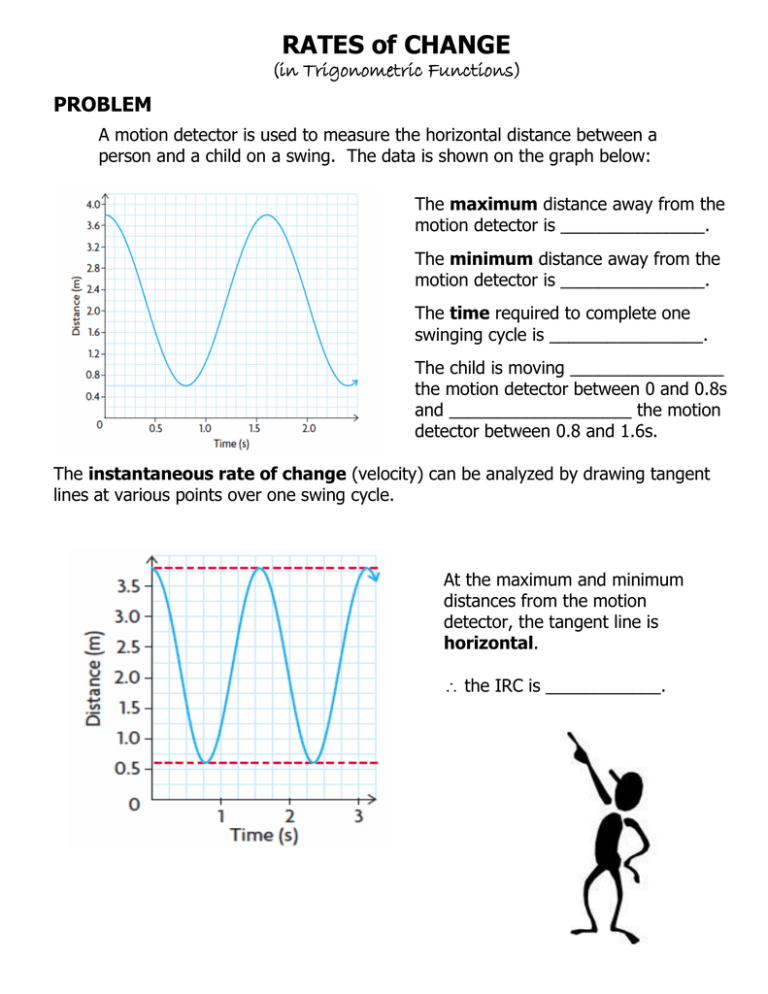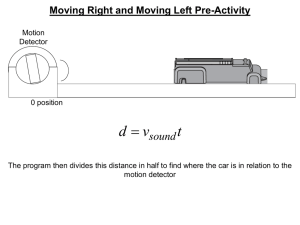RATES of CHANGE (in Trigonometric Functions) PROBLEM
advertisement

RATES of CHANGE (in Trigonometric Functions) PROBLEM A motion detector is used to measure the horizontal distance between a person and a child on a swing. The data is shown on the graph below: The maximum distance away from the motion detector is _______________. The minimum distance away from the motion detector is _______________. The time required to complete one swinging cycle is ________________. The child is moving ________________ the motion detector between 0 and 0.8s and ___________________ the motion detector between 0.8 and 1.6s. The instantaneous rate of change (velocity) can be analyzed by drawing tangent lines at various points over one swing cycle. At the maximum and minimum distances from the motion detector, the tangent line is horizontal. the IRC is ____________. Between 0s and 0.4s, the tangent lines become steeper as time increases. the child’s speed is ____________________. Between 0.4s and 0.8s, the tangent lines are getting less steep as time increases. the child’s speed is ____________________. When is the child’s speed the fastest? ______________ Where is this point located? ______________________________________________ The slopes of the tangent lines are negative. the child is moving __________________________ the motion detector. What happens at 0.8 seconds? ____________________________________________ A similar pattern of tangent lines can be seen between 0.8s and 1.6s. The child’s speed increases at first (tangents become steeper) and then begins to decrease again (tangents become less steep). The child’s speed is the fastest at t = __________. The slopes of the tangents are positive on this interval, indicating that the child is moving _______________________ the motion detector. SUMMARY The rate of change will be the greatest at the point that lies halfway between the maximum and minimum values. The equation that models the child’s distance from the motion detector over time (in seconds) is d(t) 1.6 cos t 2.2 , where d(t) 0.8 is the distance from the child to the motion detector, in metres. max = period = min = A. Determine the time and speed at which the child was moving the fastest. B. Determine the child’s average speed over the interval of time where the child swung toward the motion detector. Homework: p.370–373 #2, 7, 12




